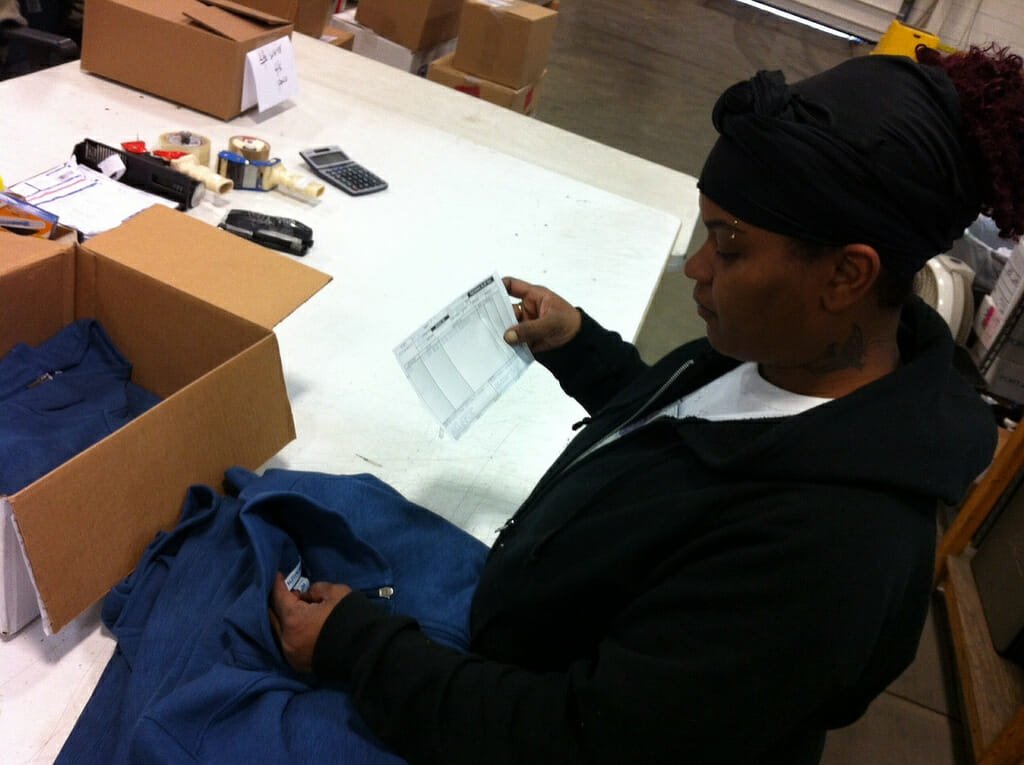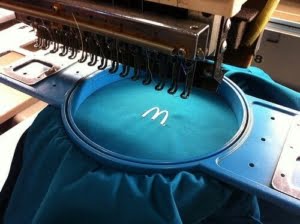I guess I’m getting old. This past few weeks have seen a marked uptick in moments of frustration with some companies that I do business with on a regular basis. I feel cranky and crotchety. (Get off my lawn!) Why is that I wonder?
A little self psychological diagnosis with a cup of coffee says that I’m irritated because I know they know better and that I want them to succeed. It’s the fact that they have bungled up some fairly simple customer service and supply opportunities. Good, basic customer service should be at the very core of any business transaction or relationship and when it doesn’t occur it’s glaringly obvious. Like a fart in a space suit. It’s inescapable.
Don’t they know that their competitors are constantly sending me wave after wave of marketing pieces and offers? I see competitive salespeople weekly and listen or read cold calling offers from them too. So what has me whining like a four year old that just dropped his popsicle?
Also, a good many readers have written and expressed their frustration with other challenges in their shops too. One of the refrains that I hear most often is “I see that I’m not the only shop with problems.” I wish everything was easy too. There will always be issues, but what are we doing to correct them is the real question?
Below I have listed the seven annoyingly frustrating things that seem to come up most often in my shop and from the e-mail mailbag from readers (thanks for sending by the way!). I would say enjoy these, but we know different don’t we?
Missing or Inaccurate Information from the Customer. This totally blows me away constantly as to why people think apparel decorators have a special mind reading skill that nobody else on the planet possesses. Recently we contacted a customer regarding some missing inventory for their order that was due to be produced, and they were outraged that we hadn’t checked it in yet. “The goods have been there for weeks!”, they said. “Here’s the tracking number.” Using that critical piece of evidence that we weren’t given initially, we were able to find their shirts for their job in about two minutes. It had a different company’s name on the packing slip, was a different color shirt than on the PO, and had extra pieces for one size. Is there any wonder why we couldn’t match this up? What’s funny is that this is not an isolated incident.
Missing information on Purchase Orders brings everything to a grinding halt. This can be a big problem when you are tasked to get things out by a certain date on the calendar. Every hour, every day that you don’t get things going puts more stress on your staff. More stress is one thing our shops don’t need.
One reader wrote me that they have a customer that can’t seem to ever get the right delivery date entered onto their Purchase Order. They always lists it as 00/00/00. How is anybody supposed to make a logical decision about what to do with that? I can relate, as I have experienced this before as well. What we’ve tried to do is work out an established standard delivery time frame for the customer, and this is reflected in our order acknowledgement. That seems to help.
However, the frustration still remains as to why more customers can’t seem to get all of the information regarding their order to you so you can do a good job. I wish I had the answer. On our end, we train our customer service staff to ask a lot of questions and try to get the answers. Following up is the key. It’s still frustrating though.
Supplier Indifference to Our Needs. There is a bit of irony when it comes to dealing with the suppliers in this industry. On one hand, you have front line salespeople who are in your shops, in your office, and usually do a superior job helping you succeed with your business. Dealing with their parent company though, sometimes is another matter. Parts you need to repair a machine are not stocked as they should be, or basic supplies are on back-order. We’ve called for technical support before and were told that the tech can’t talk to us because he’s at lunch. Four or five hours later, we still haven’t gotten the call back. It’s maddening.
One wish that I’ve had is that our suppliers treated us like we treat our customers. Sometimes I don’t think they see things the same way we do. Maybe I just don’t understand their business enough and I’m too judgemental. What I do know is that I hang up the phone or read an e-mail sent to me and say “What the fire truck?” too often. Get it together. I want these companies to succeed as frankly, I need them. This industry is very tribal. We talk. A lot. It doesn’t take much for a supplier’s reputation to crash and burn. Who wants that?
So my wish would be that suppliers in the decorated apparel industry would spend a few more bucks on customer service. Invest in a website that I can simply order parts from without interacting with anyone. Have more information available. Hire more than one or two technical reps for the entire country. When something goes wrong with a machine, it’s going to naturally go wrong when some major order is due. I need answers now. I’ll bet other shops do too.
All that being said, there are a few companies that kick ass with customer service, so it’s not all doom and gloom. Midwest Sign and Screen and NazDar for inks, M&R and Kornit for equipment for example. Unfortunately they can’t do everything, so we’re still stuck dealing with the B team for other needs. I’m sure that you have heroes on your end too.
Employees and the Rule of Thirds. If you haven’t heard of the Rule of Thirds, it states that in any group or organization there are basically three groups of people. The top third are your rock stars. In your shop these are the folks that get things done. They stay late. They are always wanting to learn. They come in early and are the first to volunteer when you need some folks to knock out a job or two on a Saturday. The middle third are people that do a good job and they sometimes will shine, but mostly they just do their work like they are supposed to, but they aren’t quite motivated enough to get into rock star status. Then, there’s the bottom third. These are what I like to call “leadership challenges”. They have attendance issues. They slough around the shop, and you occasionally have to ask them “What are you doing?”
Employee issues are the number one thing shops e-mail me about. Usually the questions are coming from shops that are scaling up and adding staff. They have been operating with four or five employees for years and now they are up to over thirty. Management isn’t always about processing orders or the technical aspects of decorating apparel. Mostly management in our context is motivating the middle third of your employees to become rock stars, and deciding what to do with the bottom third employees. All while keeping the top third rock star employees happy, engaged and rolling along.
Dealing with people can be frustrating. For some reason, there is a self-destruct button inside all of us and sometimes people will press it. They don’t even know why. However, if you don’t exert your control over the situation it will just get worse. This is why you spend the most time during the day managing your bottom third staff. Do yourself a favor. Either motivate them to get to the middle, or show them the door. Write an action plan for them with clear expectations. Either they handle them your way, or they don’t. The choice is theirs, but it makes your decision easier. Document it on paper and have them sign it. It’s been my experience that about 10% of the people you do this with will turn it around. However, that 10% can surprise you and become some of your best employees. Maybe they just needed some tough love. The other 90% will flake out and you will replace them with better people. The sooner you get started on trying to see if they will be in the 10% group the better.
Time Wasters. To make this paragraph funnier, please read the following in Jerry Seinfeld’s voice: “So, what’s the deal with these time wasters? These phone guys call up and pretend that they know me and start chatting away about how their roofing company can save me money, or they want to retool our website, or they can help with our IT, or they have a great plan for temporary labor. They go on, and on, and on…and unless you get really rude and interrupt them they will just keep talking. Don’t these people know we know how to use the internet? We are capable of contacting the outside world from our desk! If we needed a new roof, better SEO for our website, a new server bank, or some temp labor I think we do possess the right skills to find and obtain services from others. We’re not morons. The most frustrating thing though is that I have exactly fourteen minutes to eat lunch, and like clockwork this is the exact time these bozos call. Enough already!”
For the rebuttal, please read this in George Costanza’s voice: “Jerry, what you fail to realize is that I’m just hanging on to my job a Vandalay Industries by a thread. A thread, Jerry. If I don’t make 100 calls a day I’m going to lose this job and have to move back in with my parents. I just can’t take that! I don’t care if they buy from me, that’s not the point. I have to make the call. I’ve tried going door to door and leaving my brochures and cards behind like a cat that will leave a bird’s head on your doorstep. See? I was here! I don’t really expect anyone to buy from me. Calling is much easier! No bird’s head. If I just call my list today I’ll get paid. Help me Jerry. Help me by not interrupting me so I can get through my script. That’s all I ask!”
Multiple, Multiple Art Revisions. Ah, the bane of art departments everywhere! How often have you heard “We’re on our third revision!” in your shop? It’s one thing to make change here or there, but it is another matter entirely when you are making small tweaks constantly because the client keeps changing their mind. As a former art director, I can attest how maddening this can be.
Often these changes occur because we don’t know the exact expectations that the customer has for the artwork. Either it wasn’t clearly defined or communicated or maybe the customer doesn’t even know what they want from the start. A good salesperson or account rep will ask some detailed questions to try to pull that information from the client before the order is entered. Standard questions will involve Pantone color, sizes, locations, logos or verbiage that have be present and layout decisions. “Do something cool” isn’t art direction.
If you are missing information on your art instructions, one way to avoid multiple changes and a lot of frustration is to simply call the client and have a short conversation regarding the artwork. If you are starting from scratch, spend five or ten minutes and pull together a quick thumbnail that you can scan and shoot over to the customer for approval. It doesn’t have to be perfect. Just a few scribbles that will indicate placement, size relationships and the overall gist of the piece. Personally, I’ve always handled these on Post-It-Notes as I can then stick them to the side of my monitor to use when I’m building the actual file.
Bosses That Don’t Listen. From the ground floor perspective there can be a lot of frustration with your employees if you don’t listen to them. If your managerial style is more akin to a dictatorship approach (“My way or the highway”), I’ll bet you have some frustrated employees on your hands. If you stop barking orders long enough, your troops can tell you what’s needed to work faster, more efficiently, and with less effort. I’ll bet they already have. Are you listening? Do you really need to micro-manage everything?
What’s frustrating for your employees needs to be on your daily radar. You need to be asking questions and listening to what your staff feels are pain points. Are there enough tools in the shop? If you see employees labeling tape guns, Pantone books, hand carts or pallet jacks, calculators, shirt carts or roller bins, even fans during the summer…you might have a problem on your hands. Your staff needs these basic tools to perform their jobs. Make sure there’s enough to go around.
Is there enough or the right information on the work order? Can people make the right decision without consulting anyone? Do your printers know where to place the back imprint on a hoodie or where to place a left chest location on a women’s V-neck? Are all the drop-ship location entered and ready to go? These are but a few examples, but every detail about the order needs to be in the work order documentation so your staff can handle their tasks easily. If anyone has to stop what they are doing and ask “Hey, what’s this mean?” – it means they are frustrated and the order wasn’t entered correctly. Your job jefe, is to take that frustration away and make their job easier.
Included in this category also is how you treat your employees. Your staff notices when you didn’t reprimand someone for an infraction. Be fair, but firm. Treat everyone with respect and be kind. If you have a problem employee, be sure to deal with them with some progressive discipline. It is difficult to suspend or even fire someone, as nobody likes to be the bad guy. However, the longer you allow that slacker to frustrate you and your staff, the worse the problem will fester in your shop. Remember you have to manage that bottom third, so listen to what’s going on and be decisive.
Quality Control in Apparel. Let’s face it, if we consider ourselves artists then the shirts we decorate are our canvas. We want masterpieces to ship every day. However, we spend an inordinate amount of time daily making up for rampant quality control issues from apparel manufacturers and distributors. Why as a group aren’t we talking more about this? Here are some examples:
Dye migration. Yes, that one. How many millions of shirts a year are printed where the shirt dye migrates up through the ink and distorts the print hue in some way after the shirt has been printed? Sure, we all know and use different ink systems and print methodologies to combat this problem…but my point is why should we? What if instead a shirt manufacturer used a dye that was impervious to high heat and remained locked in the fibers of the shirt? Don’t you think that that would be quickly the number one shirt sold to apparel decorators? Talk about gaining market share quickly! I wish I paid more attention in chemistry class so I could invent that.
Basic sewing. Shirts are assembled with thread from patterns. It’s the one basic job they have to do. Why then are the pockets not sewn straight, sleeves are not sewn completely on, and hems unravel? Neck holes sometimes are not centered on the shirt! As printers, we use the neck hole to line up the shirt on the platen when we load it onto the press. If the neck hole is not centered, then the print will be off center on the shirt. Don’t get me started on hoodie pockets either. What a mess. Are you tired of customers complaining about something wrong with the shirt, and either demanding a reprint or a refund? Of course, these are the same customers that did not want to go with a higher quality shirt to begin with, so…
Shirt packaging for embroidery. Just curious as to how many Port Authority dress shirts they sell at retail? Some days for large orders we have to bring in people to unpackage the collar stays, shirt pins, clips and shrink wrap to be able to unpackage the shirt to get it ready for embroidery. Is all of that really necessary? Sure it makes the shirt look nicer, and there is a perceived value behind that I’m sure…but if the majority of the shirts are headed to apparel decorators who will have to unravel that knot before decorating the shirt is it necessary? What if they did not do it, would the product suffer somehow?
Illegible packing slips. In our shop, every single box and package is reviewed and checked against the packing slip to ensure we have what’s on the order. If we can’t read the packing slip, then this job is impossible. If you are a distributor and use carbonless packing slip forms, on occasion my staff is dog-cussing you under their breath. Tighten up.
What are yours? Frustrated? Want to vent? Post your frustrations in the comments section for some apparel decorator group therapy. The doctor is in. He sounds a lot like Kramer though.





5 comments
Weaveron Textile
Nice blog.. I like your site.
click here: https://www.weaveron.com
David
I just copied and pasted the bits about the bottom third…having some bottom third issues this week.
Jared
Bahahaha….Port Authority dress shirts! Bahahaha……
Justin
Chuckling audibly…as per usual, I checked off each of those as I read.
atkinsontshirt
Thanks Justin!!